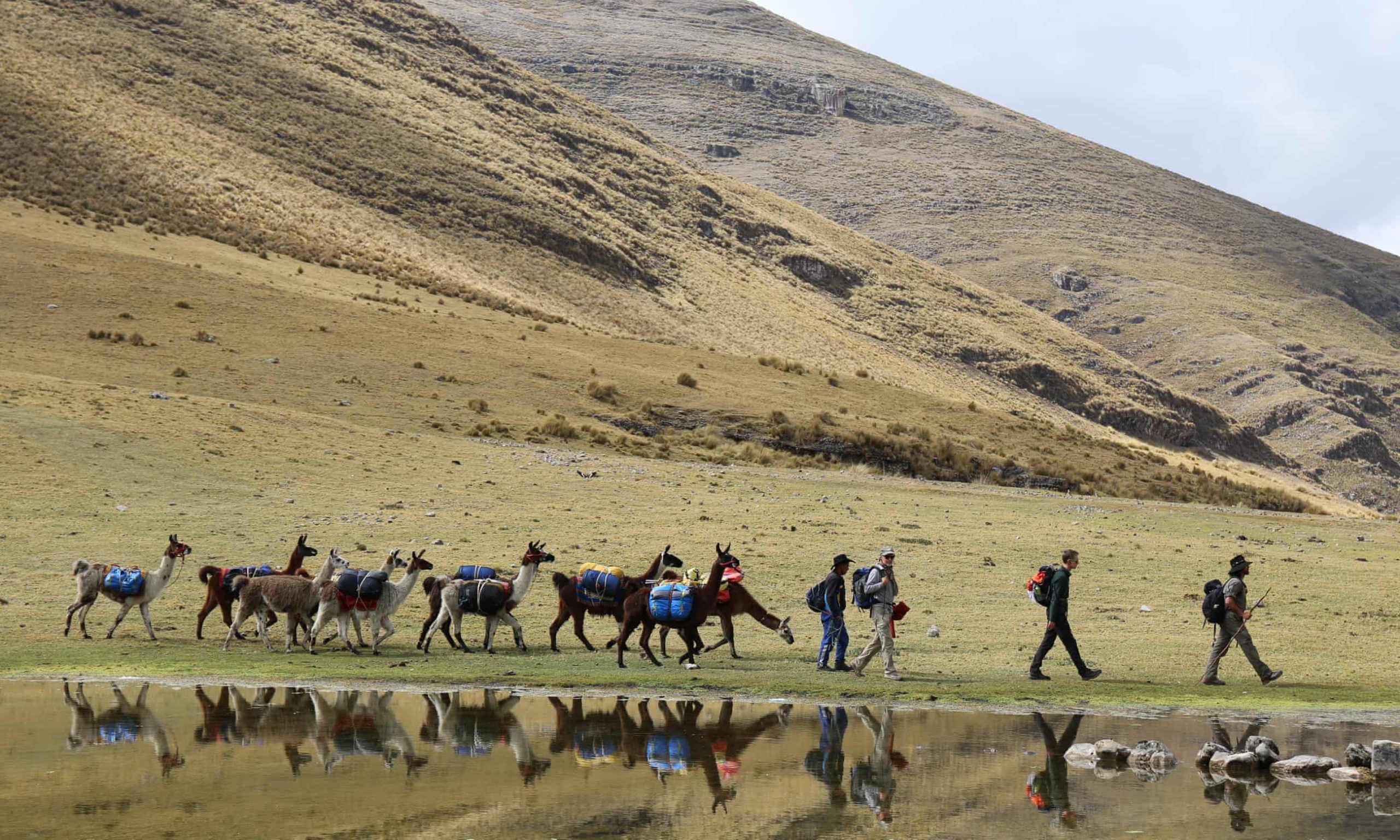
Machu Picchu sees a million visitors a year, but another great pre-Columbian monument remains little-known. We join the first supported trek on the Incas’ Royal Road

Climbing from the ancient Peruvian pilgrimage site of Chavín, we pass fields of quinoa flowering purple in a last burst of energy before they are harvested. There are bunches of maize hanging from the farmhouse rafters in shades of gold and red, and the small village plaza has plants that would not be out of place in an English country garden: hibiscus, hollyhocks and astrantia.
And then we are above the village and the tree line and come to the Royal Road of the Incas, the Capac Ñan, which stretches for an astonishing 1,500 miles from Ecuador to Bolivia – down the length of the Andes, and their empire.
It snakes ahead of us through the mountains, stone-lined and up to 10 metres wide. It’s an enticing prospect for the next five days, when we will walk one of the best-preserved sections, often at altitudes of over 4,000 metres.
Although I’ve known about the Capac Ñan for decades, this is one of the first opportunities I’ve had to walk part of it. An enterprising American, Nick Stanziano, travelled most of it a few years ago (it took him over four months), and his company, SA Expeditions, recently started offering the first commercial treks, on the section he thought was the finest.
For while the Inca Trail to Machu Picchu is well-known and well-travelled, until now few visitors to Peru have had the chance to do a supported trek along this most impressive and ancient of roads.
And it is wise to have some support to undertake it. Once you embark on a section like this, there is little help available should anything go wrong: you are, as they say in mountaineering circles, committed. I am undertaking it with my sons, Owen and Leo, aged 22 and 19, which is a risk in itself, as they are, of course, far fitter than me.
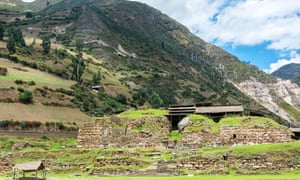
Our five-day walk began at Chavín de Huantar. This ancient pilgrimage site predates Machu Picchu by some 2,000 years and is often hailed as the “origin civilisation” for the Peruvian Andes. It is a fascinating complex of labyrinthine tunnels. We are shown round by the archaeologist John Rick, who has been excavating at the site for 25 years and has an infectious enthusiasm for its theatrical qualities.
The priests at Chavín would lead supplicant nobility into the tunnels after drugging them heavily with a cocktail of mescaline and ayahuasca, a potent combination. They would then play musical instruments along passages specially designed to distort the sound, and also used cunning shafts to reflect light from the surface. The result would have been a sound and light show to awe and impress – what John tells us was “a finely tuned psychoactive machine for convincing people of the power and validity of Chavín”.
At around 3,000 metres, Chavín also allowed us some much-needed altitude acclimatisation before we began on the really high stuff. And now we are back above ground and embarking on the Royal Inca Road, blinking slightly after our encounter with the subterranean, as the original supplicants must have done, but without the hangover.
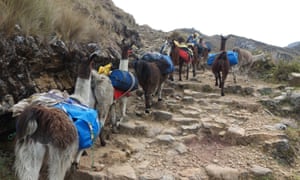
We are trekking with llamas, just as the Incas would have done. This might seem sentimental given that mules can carry far more weight (70kg compared with a llama’s 25kg) but there are excellent reasons for this: the impact of llamas on the road is far less than that of heavy-footed mules. We are, after all, walking on a monument.
Also, in this area of the Central Highlands, llamas are still used extensively as beasts of burden, an increasing rarity in Peru. With their brightly coloured tassels and woven bridles, our team of 10 llamas makes a fabulous sight as they stream ahead of us.

But the real star of the show is the Inca road itself. The engineering challenges presented by crossing passes higher than the Matterhorn were extreme. But the main highway down the Andes was designed to be more than a functional road; this was a statement of Inca power to all the client tribes they had conquered and whose lands it crossed. Which is why the road is often so wide and seems to possess the landscape with its swirls and curls.
Every time we come over a pass into a new valley, it presents some new trick or spectacle. One moment we are travelling high over the brown-grassedpuna, with white cobblestones marking the kerbs like a landing strip; then we’re winding along a river canyon, with the road beside it built up like a causeway to avoid flooding.
The most spectacular moment comes on the third day, when we’re ascending from the small settlement of Ayash to the highest of the passes, at 4,380 metres. After we’ve climbed on a path lined with red cantuta flowers and buzzing with sapphire-winged hummingbirds, the road widens into a broad stone staircase that wouldn’t have looked out of place in a Busby Berkeley musical. This was a fabulous extravagance that only the Incas could afford: they made client tribes provide the labour for such projects as tribute, in what was effectively a cashless society.

That night we camp beside the small farm owned by middle-aged couple Juan and Maximiliana. They show us some of their 120 guinea pigs – they usually eat one every third day, Maximiliana tells me, to keep the numbers steady – along with their sheep and horses. As we sit out under the stars, Juan gets out his trumpet to play a few riffs from his marching band days. Because we are so high, the sky is startlingly clear, with the Milky Way stretching away through the southern constellations and Mars as red as I have ever seen it.
Juan tells me they have nine children, all of whom have left home to work in cities, but that he himself sees no need to travel. “I have my pigs, my sheep, my horses and my guinea pigs here. Why should we want to live anywhere else?”
Maximiliana shows me some of the textiles they weave from sheep’s wool on a loom under the eaves: ponchos dyed brown with walnut juice, but also more brightly dyed synthetic weavings. Western purists often want to buy Andean textiles made with natural dyes, but Maximiliana tells me that can get dull – the Peruvian equivalent of everyone wearing Laura Ashley. She likes something with more oomph, in bright orange or pink.
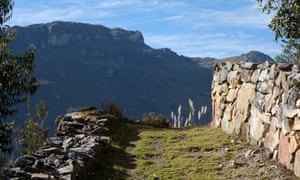
The tradition of weaving runs deep in the Andes: as they had no form of writing, textiles were often the best way of expressing themselves. When the Spaniards under Francisco Pizarro took this road to conquer the country – complaining about how high it was and how unsuitable for their heavy armoured horses – the conquistadors were bitterly disappointed that most of the storehouses along the way contained not gold, as they had hoped, but weavings, considered far more valuable by the Incas.
Next day, we come to Sacracocha, a highland lake with a wealth of bird life: puna ibis, stalking with their black legs across the water before flying straight and true ahead of us; and mountain caracara, circling us overhead, like small condors.
There are some long days, with seven or eight hours of walking. As well as the llamas, we have one small horse for any possible medical evacuation (the mountains are unsuitable for helicopters), a delightful steed called Trueño (Thunder). I ride him occasionally, to the horror of my sons (“Dad, this is supposed to be a walking challenge.” “No, it’s not – it’s supposed to be a holiday.”)
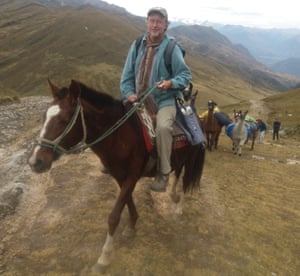
There’s nothing like riding a small sure-footed Andean horse into the mountains with a herd of llamas around you – unless it’s having a cold beer when you reach your final destination, which in our case was Huánuco Pampa, the biggest of all the storehouse complexes along the Great Inca Road. It’s an enormous settlement with a central plaza measuring 550 metres by 350 (considerably bigger than Red Square). At the heart of the complex is a great ushnu, a ceremonial platform the Incas used to show their dominance of an area. This is the largest surviving one in Peru. An estimated 4,000 Inca soldiers could be housed in the barracks nearby to control rebellions.
The local community had prepared a pachamanca, a delicious meal of baked pork, potatoes and beans, to welcome us as the first of what they hope will be many travellers following this new trekking route. It certainly deserves to become a well-trodden one.
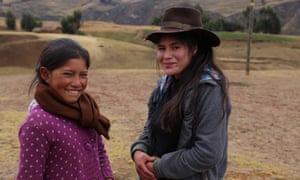
Joining the million visitors who go to Machu Picchu each year is still a great experience. And, of course, it’s possible to do both in a fortnight, as we did, flying on afterwards to spend a few days at Cusco and Machu Picchu. But to experience ancient Peru at its wildest, this trek from Chavín, the original centre of Andean civilisation, to one of the great Inca sites at Huánuco Pampa, is hard to beat. What better way to plug into Inca civilisation than to follow their footsteps along their Royal Road, testimony to their facility for building at heights other civilisations would never dream of reaching.
The Guardian

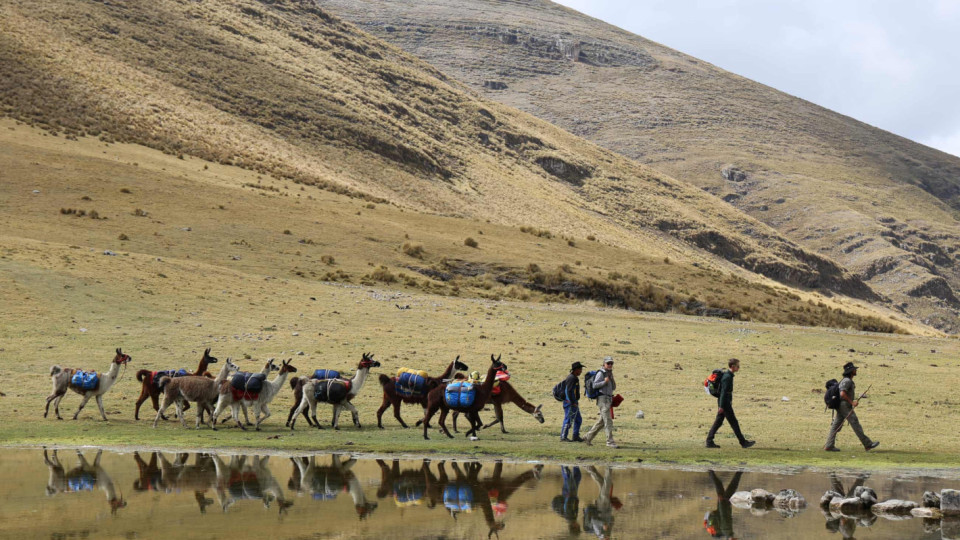
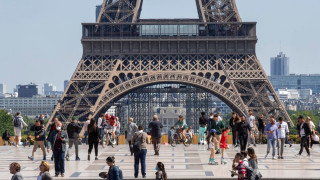





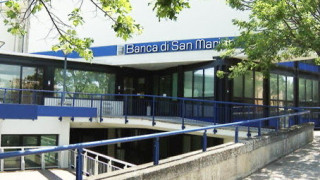


Leave a comment